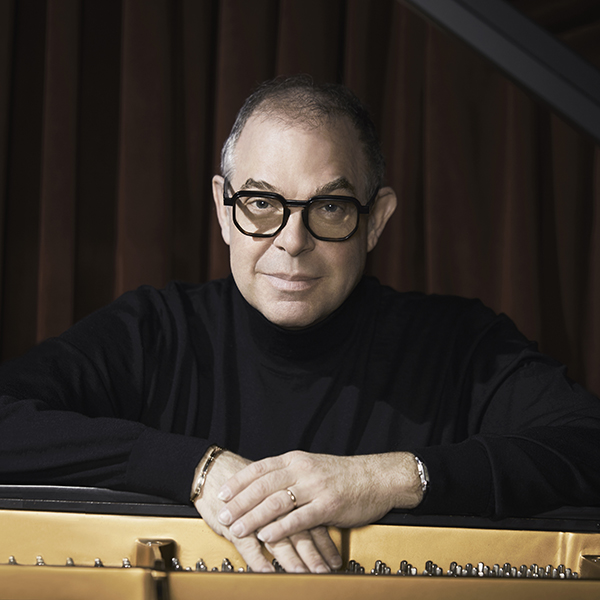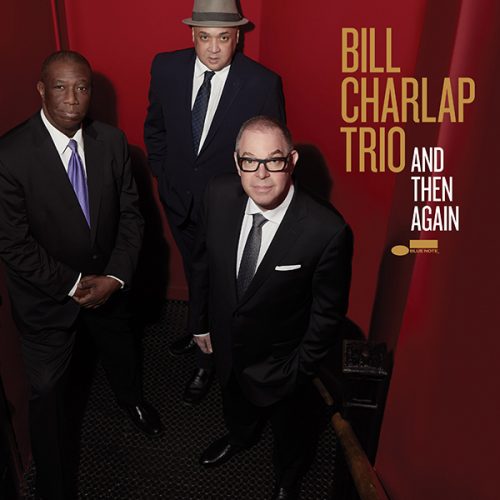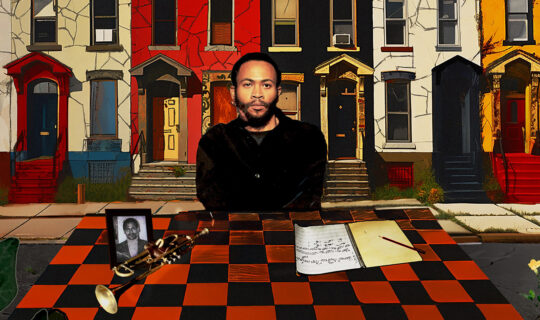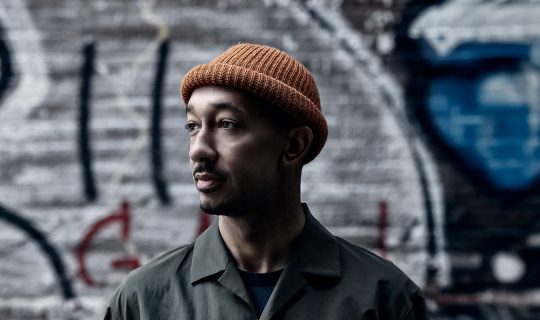August 16, 2024
By Evan Haga
After 27 years and nearly 20 albums, it still bears repeating that Bill Charlap is one of the great jazz piano players, and that his trio with bassist Peter Washington and drummer Kenny Washington is one of the great working jazz groups of our day. But what does that mean, and why does it need reiterating?
It means everything that can be heard on the Bill Charlap Trio’s new Blue Note release, And Then Again, recorded live at the Village Vanguard: The locked-in accord and extrasensory communication shared among the three musicians. The fleet yet diamond-sharp decision-making that happens bar after bar, tune after tune. The terra firma of the repertoire set against the improvised pluck of the arranging, and the many wonderful, unforgettable moments that ensue.
And ultimately, it means understanding that individualism within the tradition is paramount — the idea that only these three musicians with these three stories could ever produce this sound. Or, as the genial pianist puts it, simply and beautifully: “We play how we play, and we play the music we love.”
“You want it to be real, coming from a place of truth.”
Which brings us to what Charlap and his trio are not, despite decades of well-meaning yet misguided notions. They are not pedantic defenders of the curios of the Great American Songbook, or a cabaret act performing a certain strain of supper-club elegance. They are not preservationists for any particular landmark piano trio; rather, their lifelong enthusiasm for the entirety of jazz history is brought to bear in every performance. “I would say that there is no one model,” Charlap explains, “and yet there are many models.”
“I’m a jazz piano player,” he adds later. “Yeah. I’m a jazz piano player.”
In the discography of Charlap’s group — its own micro-canon of piano-trio language and repertoire — And Then Again hits as especially open and intrepid. It was captured in one Saturday evening at the Village Vanguard, and it boasts a program of inspired familiarity. The set also serves to document the current state in the trio’s continuing evolution, away from an outsize book of hundreds of tunes and charts, and toward a strategy where the setlist and the performances are as natural and intuitive as they can possibly be. Again, the interplay, spontaneity and identity are the takeaway — even if Charlap very obviously adores these tunes and their composers, and has lived this music.
Indeed, to prod him through his program is to receive something like GRAMMY-winning liner notes in real time. The lead-off title track “And Then Again,” with its spiky Bird-like energy, was written by one of Charlap’s heroes Kenny Barron. “Everything he composes has that effortless quality of inevitability,” Charlap says. Jerome Kern and Oscar Hammerstein’s “All the Things You Are,” Charlap explains, “has been in my DNA” through his mother, the great singer Sandy Stewart, and his mentor Dick Hyman, and via his late friend and collaborator Tony Bennett, among so many other connections. A mention of Charlap’s performance of “‘Round Midnight” sparks an exposition on Thelonious Monk that overflows with insight. “The paradigm” for jazz composition is Monk, Charlap says, “we’re talking about a blueprint that takes into account the improviser, the rhythm section, the composer’s vision plus room for the individual…everything.”
Charlap calls Dave Brubeck, who wrote “In Your Own Sweet Way,” a “total original” and goes on to say “through the recordings of Miles Davis, it has become a perennial for jazz musicians. A beautiful love song written for Brubeck”s wife Iola – harmonically attractive and melodically memorable.” Regarding his take on Jimmy Van Heusen’s “Darn That Dream,” Charlap cops to an allusion to Gerry Mulligan’s classic Birth of the Cool arrangement, but also recites the tune’s larger Broadway and jazz history with immaculate concision. The Gershwins’ “The Man I Love,” Charlap explains, “is so finely wrought that just three notes — the bass note, the melody note and one harmony note, the third — tell you everything about how the song is constructed.” The closing “(I Don’t Stand) A Ghost of a Chance With You” is “an ultimate torch song” that he cherishes for Victor Young’s melodic-harmonic richness, and for Lester Young’s equally sumptuous handling of it. Rattling the list off from memory, Charlap recounts the composers that made the cut. “It’s a high-class group,” he says.
And yet… And Then Again echoes in your mind as a delightful hour of high-wire interplay rather than a compendium of tunesmiths. “It’s like a half-full helium balloon,” Charlap says. “We’re tapping it to keep it from dropping on the floor, but you just tap it and you watch it and you tap it. You keep it afloat.” Within that dance, fantastic occurrences unfold. To wit: the mystifying drum solo that crops up a minute into “In Your Own Sweet Way,” in which Kenny Washington patters his cymbals as if conducting clouds, until his trio-mates rematerialize for the interlude; Charlap repeats a note deliberately against time, and the tension, the uncertainty, of the entire episode is thrilling. Or the marvelously simple earworm figure that opens and punctuates “Sometimes I’m Happy,” borrowed from Charlap’s dearly departed friend Freddy Cole. Every chorus of spontaneous rhythm in And Then Again seems to embody so much — about the song, about the iconography of jazz, about the trio’s collective history. “The best sets are the ones where you feel the most extemporaneous, because you’re telling a story. And that’s your job as an improviser, to tell a story,” Charlap says.
The band’s narrative begins back in 1997, when what would become the Bill Charlap Trio recorded All Through the Night for Criss Cross Jazz, where Peter Washington and Kenny Washington had been working as a kind of house rhythm section. (As every press clipping must point out, they aren’t related by blood, though of course they are in myriad other ways.) “I remember looking at Kenny,” Charlap recalls. “He was playing those beautiful brushes, and Peter’s sound was lifting the band. I remember we were looking at each other and we were all kind of in slow-motion, fast-motion. It was like, ‘What’s going on here? This has chemistry.’”
Culturati buzz and glowing profiles by name-brand critics followed, as did regular stands at the Vanguard including the trio’s 2007 album Live at the Village Vanguard. It was hallowed ground that Charlap first became acquainted with as “a wild New York City kid, knocking around the Village,” he says. When the basement club’s door was ajar, he could stand in the stairwell to eavesdrop on sets by Shirley Horn, Joe Henderson and others, captivated. Years later, when it came time to headline the venue, that sense of revelation only redoubled.
“People ask, ‘What’s so special about playing the Vanguard?’” Charlap begins. There are the ghosts and the lore, of course, preserved for eternity on so many marvelous recordings that fill the record shelf in any self-respecting jazz fan’s home. “The history, that gravitas, is very poetic, but that’s not it,” he says.
“By some extraordinary phenomenon,” he continues, “those curtains, the magical shape of the room, the height of the bandstand — the sound on the stage for the artist at the Vanguard is perfect. That’s why such iconic performances happen there. It’s as simple as that.”
“This record is about the communication of the trio — what we’re doing individually, and what we’re doing as a unit. And we try to do this in our own way, without really having to think too much about doing it in our own way. That should just happen naturally, and I think it does. You train the head, you trust the heart.”
“Recorded jazz,” he adds, “is capturing lightning in a bottle.”







